Susan Price's Blog: Susan Price's Nennius Blog, page 13
September 27, 2013
Experiments in Scrivener
I first heard of the Scrivener programme when I was working
 for the RLF. Another writer told me about it. The programme was, he said, the greatest example of writerly procrastination ever. Its creator, Keith Blount, allegedly, came up with it to help him organise his material for his 'big novel' - which still hasn't been written.
for the RLF. Another writer told me about it. The programme was, he said, the greatest example of writerly procrastination ever. Its creator, Keith Blount, allegedly, came up with it to help him organise his material for his 'big novel' - which still hasn't been written.
Later I heard about it from Authors Electric's Chris Longmuir, who is a big fan - and will be writing about it for a forthcoming Authors Electric 'How To Day' on the 29th day of some future month.
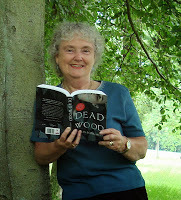 ChrisLongmuir My impression, after reading what Chris had to say, was: 'Well, I can do all of that in Word.' If I want all my research for a book in one place, I can make a Research File, and give it sub-headings with Word's 'Document Map' or 'Navigation Pane.' If I want visual references, I can insert them into the files. Another Author Electric, Catherine Czerkawska, was sceptical too. One of the features Chris mentioned was being able to write scenes out of sequence, store them in a separate file, and then, later, slot them in where they seem to fit best. 'I never write out of sequence,' Catherine said, 'so I don't think I'd find this useful.' We're not easy sells, me and Catherine.
ChrisLongmuir My impression, after reading what Chris had to say, was: 'Well, I can do all of that in Word.' If I want all my research for a book in one place, I can make a Research File, and give it sub-headings with Word's 'Document Map' or 'Navigation Pane.' If I want visual references, I can insert them into the files. Another Author Electric, Catherine Czerkawska, was sceptical too. One of the features Chris mentioned was being able to write scenes out of sequence, store them in a separate file, and then, later, slot them in where they seem to fit best. 'I never write out of sequence,' Catherine said, 'so I don't think I'd find this useful.' We're not easy sells, me and Catherine.
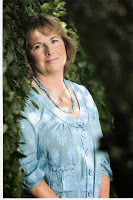 Catherine Czerkawska
Catherine Czerkawska
But I'm between books at the moment - always a restless time. Sterkarm 3 is still with my new agent. I've finished the book about the boy walking across the Highlands with herd-dogs, and am letting it rest for a while. (A child at a school recently suggested I call it 'Those Two Dogs.')
So I've dug out a couple of projects that fell by the wayside a while ago. One is partly written, but has no middle or end (but a lot of promise, I think.) The other is a pretty wild and woolly, futuristic, SF-flavoured idea which is still in the first sketchy stages of planning. (I abandoned it, not because of lack of enthusiasm, but because Life got in the way about a year ago. Oh, and the Scottish dogs came bounding into view.)
I've been casting round for a way to plan out these books, so I can see clearly what I've got and where they might head. I wanted to use something like the Beat Sheet ideas set out by Roz Morris in ' Nail Your Novel' and also in 'Save The Cat!' by Blake Snyder.
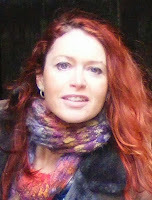 Roz Morris Trouble is, these methods require lots of fiddly index cards, or big sheets of paper, and space to spread them out - space I don't really have. Was there some tighter - almost, you might say, virtual - way of doing it? And I remembered that Scrivener offers a free 30 day trial.
Roz Morris Trouble is, these methods require lots of fiddly index cards, or big sheets of paper, and space to spread them out - space I don't really have. Was there some tighter - almost, you might say, virtual - way of doing it? And I remembered that Scrivener offers a free 30 day trial.
So I went here, and downloaded it.
First of all I read through the substantial - two hours! - introductory course that comes with it. It made my head spin, and I felt a bit overwhelmed - but I have to say it is very thorough. And interactive, so you actually get to try the tools out as it takes you through them. Okay, it takes two hours, but you do finish up with a very good idea of what Scrivener can do - and, I suppose, if you hate it, you can cut your losses right there, uninstall it, and never think about it again.
I liked what I saw, so I decided to go ahead and load my work into it, and see how I got on. And after a night's sleep, I found it much less overwhelming, and quite easy to use.
I've been working with Scrivener for a couple of days now, and I think I may be a convert. Scrivener costs $40, by the way, which works out at about £30 - which, considering everything it does, is pretty good value.
So here's what Scrivener looks like on my screen.
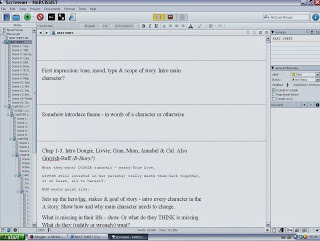
To the left is the pane which holds the 'Binder' for this particular project. Think of it as a giant folder to hold all the other folders.
The staggered entries you can see down this panel are my entered chapters and scenes.
At the bottom of this pane are folders for storing Research, Characters and Places - all accessible by simply moving your cursor to the left.
And you can split the screen, either horizontally or vertically, so you can have your work on one side of the split, and a reference file, maybe a visual reference, on the other. (You can do this in Windows, but it's much easier in Scrivener.)
To the right is another pane, which holds the 'index cards' which will show up on the 'corkboard'. Here you can enter a brief summary of each chapter or scene: who's in it, what happens, where it takes place, etc. At the bottom of this right-hand pane is a section where 'key-words' can be entered. These will help you find a particular spot or - if a key-word is a character's name, for instance - find every chapter and scene in which they appear and 'compile' them, so you can read through only those scenes, and check how they are working.
In the centre is the edit box where you write - or copy in what you've already written. You can work through in order, from beginning to end, or you can write scenes here and there as they occur to you and fit them together later. Scrivener is designed to work with you, whatever your style.
And say, for instance, that you wanted to take an overview of just those scenes featuring your talking dog. Use key-words to find them and 'compile' them in the Edit box - it's as if someone had sorted through your paper manuscript, found just those scenes and put them in front of you.
Suppose, as you read through them, you make the odd change here and there - put in a better phrase, correct some typos, etc. At the end of your reading, these separate scenes return to their proper place in the 'manuscript' - but all the changes you made are retained. It's as if you took those pages out of a paper manuscript, checked through them, altered them, and put them back in their proper order. Only a lot easier to do.
Right at the centre of the Edit screen, at the top, are three buttons. They are Pages, Corkboard and Outline.

Pages, as you'd expect, shows you the pages you're working on, and you navigate through the different chapters and scenes by clicking on the headings in the pane to the left. This is also where any compilation you choose to make is read.
But sometimes you get befuddled by all those words. You want to see the story simply laid out in front of you. At those times you click on Corkboard, and this shows you your 'index cards' notes from the right-hand pane - but shows you them all together. Like this. (You can change the size of the cards, and how many appear in a row.)
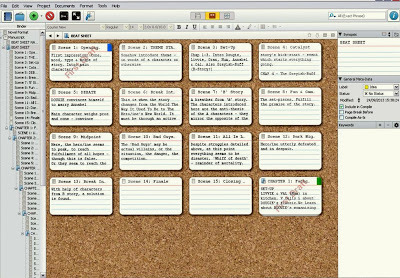
I made my first 'chapter' a list of beats instead, to help me plot my story - each 'scene' or 'index card' is a beat in the story. Tiny pictures can be imported into the top left corner of the card, and differently coloured 'pins' can be added to the right hand corner (say, a different colour per character.) You can move them around, to see if your story can be improved.
But I think I may find the third button as useful, if not more so. This shows you an outline. Like this:

It's the index cards simplified, and gives you another way of keeping track of who's doing what to whom, and when.
I haven't even talked about the research, character and place files, or what Scrivener will do for you when you've finished your book.
I think this blog may run to two or three episodes...
And I have a month to decide whether or not to cough up thirty quid to buy the programme. Scrivener promises that I'll be able to unload all my writing from the programme, without harming it, if I decide not to buy.
But, at the moment, I am inclining towards buying...Or getting someone else to buy it me as a very early Christmas present.
 for the RLF. Another writer told me about it. The programme was, he said, the greatest example of writerly procrastination ever. Its creator, Keith Blount, allegedly, came up with it to help him organise his material for his 'big novel' - which still hasn't been written.
for the RLF. Another writer told me about it. The programme was, he said, the greatest example of writerly procrastination ever. Its creator, Keith Blount, allegedly, came up with it to help him organise his material for his 'big novel' - which still hasn't been written.Later I heard about it from Authors Electric's Chris Longmuir, who is a big fan - and will be writing about it for a forthcoming Authors Electric 'How To Day' on the 29th day of some future month.
 ChrisLongmuir My impression, after reading what Chris had to say, was: 'Well, I can do all of that in Word.' If I want all my research for a book in one place, I can make a Research File, and give it sub-headings with Word's 'Document Map' or 'Navigation Pane.' If I want visual references, I can insert them into the files. Another Author Electric, Catherine Czerkawska, was sceptical too. One of the features Chris mentioned was being able to write scenes out of sequence, store them in a separate file, and then, later, slot them in where they seem to fit best. 'I never write out of sequence,' Catherine said, 'so I don't think I'd find this useful.' We're not easy sells, me and Catherine.
ChrisLongmuir My impression, after reading what Chris had to say, was: 'Well, I can do all of that in Word.' If I want all my research for a book in one place, I can make a Research File, and give it sub-headings with Word's 'Document Map' or 'Navigation Pane.' If I want visual references, I can insert them into the files. Another Author Electric, Catherine Czerkawska, was sceptical too. One of the features Chris mentioned was being able to write scenes out of sequence, store them in a separate file, and then, later, slot them in where they seem to fit best. 'I never write out of sequence,' Catherine said, 'so I don't think I'd find this useful.' We're not easy sells, me and Catherine.  Catherine Czerkawska
Catherine CzerkawskaBut I'm between books at the moment - always a restless time. Sterkarm 3 is still with my new agent. I've finished the book about the boy walking across the Highlands with herd-dogs, and am letting it rest for a while. (A child at a school recently suggested I call it 'Those Two Dogs.')
So I've dug out a couple of projects that fell by the wayside a while ago. One is partly written, but has no middle or end (but a lot of promise, I think.) The other is a pretty wild and woolly, futuristic, SF-flavoured idea which is still in the first sketchy stages of planning. (I abandoned it, not because of lack of enthusiasm, but because Life got in the way about a year ago. Oh, and the Scottish dogs came bounding into view.)
I've been casting round for a way to plan out these books, so I can see clearly what I've got and where they might head. I wanted to use something like the Beat Sheet ideas set out by Roz Morris in ' Nail Your Novel' and also in 'Save The Cat!' by Blake Snyder.
 Roz Morris Trouble is, these methods require lots of fiddly index cards, or big sheets of paper, and space to spread them out - space I don't really have. Was there some tighter - almost, you might say, virtual - way of doing it? And I remembered that Scrivener offers a free 30 day trial.
Roz Morris Trouble is, these methods require lots of fiddly index cards, or big sheets of paper, and space to spread them out - space I don't really have. Was there some tighter - almost, you might say, virtual - way of doing it? And I remembered that Scrivener offers a free 30 day trial.So I went here, and downloaded it.
First of all I read through the substantial - two hours! - introductory course that comes with it. It made my head spin, and I felt a bit overwhelmed - but I have to say it is very thorough. And interactive, so you actually get to try the tools out as it takes you through them. Okay, it takes two hours, but you do finish up with a very good idea of what Scrivener can do - and, I suppose, if you hate it, you can cut your losses right there, uninstall it, and never think about it again.
I liked what I saw, so I decided to go ahead and load my work into it, and see how I got on. And after a night's sleep, I found it much less overwhelming, and quite easy to use.
I've been working with Scrivener for a couple of days now, and I think I may be a convert. Scrivener costs $40, by the way, which works out at about £30 - which, considering everything it does, is pretty good value.
So here's what Scrivener looks like on my screen.

To the left is the pane which holds the 'Binder' for this particular project. Think of it as a giant folder to hold all the other folders.
The staggered entries you can see down this panel are my entered chapters and scenes.
At the bottom of this pane are folders for storing Research, Characters and Places - all accessible by simply moving your cursor to the left.
And you can split the screen, either horizontally or vertically, so you can have your work on one side of the split, and a reference file, maybe a visual reference, on the other. (You can do this in Windows, but it's much easier in Scrivener.)
To the right is another pane, which holds the 'index cards' which will show up on the 'corkboard'. Here you can enter a brief summary of each chapter or scene: who's in it, what happens, where it takes place, etc. At the bottom of this right-hand pane is a section where 'key-words' can be entered. These will help you find a particular spot or - if a key-word is a character's name, for instance - find every chapter and scene in which they appear and 'compile' them, so you can read through only those scenes, and check how they are working.
In the centre is the edit box where you write - or copy in what you've already written. You can work through in order, from beginning to end, or you can write scenes here and there as they occur to you and fit them together later. Scrivener is designed to work with you, whatever your style.
And say, for instance, that you wanted to take an overview of just those scenes featuring your talking dog. Use key-words to find them and 'compile' them in the Edit box - it's as if someone had sorted through your paper manuscript, found just those scenes and put them in front of you.
Suppose, as you read through them, you make the odd change here and there - put in a better phrase, correct some typos, etc. At the end of your reading, these separate scenes return to their proper place in the 'manuscript' - but all the changes you made are retained. It's as if you took those pages out of a paper manuscript, checked through them, altered them, and put them back in their proper order. Only a lot easier to do.
Right at the centre of the Edit screen, at the top, are three buttons. They are Pages, Corkboard and Outline.

Pages, as you'd expect, shows you the pages you're working on, and you navigate through the different chapters and scenes by clicking on the headings in the pane to the left. This is also where any compilation you choose to make is read.
But sometimes you get befuddled by all those words. You want to see the story simply laid out in front of you. At those times you click on Corkboard, and this shows you your 'index cards' notes from the right-hand pane - but shows you them all together. Like this. (You can change the size of the cards, and how many appear in a row.)

I made my first 'chapter' a list of beats instead, to help me plot my story - each 'scene' or 'index card' is a beat in the story. Tiny pictures can be imported into the top left corner of the card, and differently coloured 'pins' can be added to the right hand corner (say, a different colour per character.) You can move them around, to see if your story can be improved.
But I think I may find the third button as useful, if not more so. This shows you an outline. Like this:

It's the index cards simplified, and gives you another way of keeping track of who's doing what to whom, and when.
I haven't even talked about the research, character and place files, or what Scrivener will do for you when you've finished your book.
I think this blog may run to two or three episodes...
And I have a month to decide whether or not to cough up thirty quid to buy the programme. Scrivener promises that I'll be able to unload all my writing from the programme, without harming it, if I decide not to buy.
But, at the moment, I am inclining towards buying...Or getting someone else to buy it me as a very early Christmas present.
Published on September 27, 2013 16:05
September 13, 2013
Secret Ninja Driving Update
Have a go at this. Go on. Have a go.
It's a good example of why I'm taking the Advanced Driving Course. I nearly went through a red light last Sunday - while I was taking a 'Pre-Test Trial Run.' Which is not good. It happened less than ten minutes after the drive started and, as my examiner remarked, if it had been a real exam, it would have ended there - and rightly so. What a clogger of a stupid novice mistake.
As it was only a trial (to see how ready I am for the real thing), the test continued, and, in the end, I earned at least a silver
 star and a tick. 'Lovely controlled stop,' my examiner purred, as I drew up at traffic lights. 'Lovely!' he said, as I timed my approach to a roundabout exactly right, with correct speed and gear, and sailed around it without pause (but with 'life-saving glances' to right and left.)
star and a tick. 'Lovely controlled stop,' my examiner purred, as I drew up at traffic lights. 'Lovely!' he said, as I timed my approach to a roundabout exactly right, with correct speed and gear, and sailed around it without pause (but with 'life-saving glances' to right and left.)
So I have learned something over all these weeks. The last pre-test run I took, eight weeks into the course, was a disaster. I knew I was nowhere near the required standard, and was proved right. 'We were doing the Churchill,' said the examiner, referring to the noddy-dog in the insurance ads. As so often happens when you're trying to master a new skill, or unlearn old habits and acquire new ones, I'd got worse rather than better. My crashing of gears and sharp braking had my mentor and examiner rocking backwards and forwards in their seats.
So, if I've improved, how come I missed that red light (until the examiner made a great fuss about it?) Well, it was early in the test, and I hadn't settled down. Nerves were getting to me. I know that one of my major failings is not looking far enough ahead and anticipating hazards. (Anything which might make you slow down, brake, or change direction is a hazard. A lot of things come under that heading.) So I was trying very hard to look ahead and
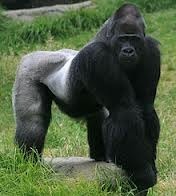 anticipate. I was so busy studying the far distance, where there was a major roundabout, with traffic-lights, and trying so hard to anticipate what I would have to do when I got there, that I entirely missed the traffic-lights a short distance ahead - just as you miss the gorilla if you're concentrating hard on the players in black clothes. I knew that particular road quite well, too.
anticipate. I was so busy studying the far distance, where there was a major roundabout, with traffic-lights, and trying so hard to anticipate what I would have to do when I got there, that I entirely missed the traffic-lights a short distance ahead - just as you miss the gorilla if you're concentrating hard on the players in black clothes. I knew that particular road quite well, too.
It was embarrassing. If I hadn't been driving, I would have kicked myself and punched my own head.
Still, after that stupid mistake, I felt I'd done my worst, and calmed down. I did pretty well after that. (It was all like a repeat of my first driving test, in fact. I failed that because of one gigantic, stupid mistake made in the first few minutes - but then settled down and drove to a far higher standard than I did when I actually passed the test a few weeks later.)
Anyway, on the Advanced Driving Pre-Test, after that first clogger, I drove well enough for my mentor, Brian, to see that all the Sunday mornings he's given up to drive around with me have not been entirely in vain.
 With Roy, the examiner, in the passenger seat, and Brian leaning over from the back-seats, we took a short drive down the M5 and M6, and I was thrilled that Roy considered my motorway driving quite up to the mark. 'You maintained speed and lane discipline, and drove confidently.' If we go out with him for another pre-test run, Roy said, he wouldn't even bother with the motorway. Brian's work there is done.
With Roy, the examiner, in the passenger seat, and Brian leaning over from the back-seats, we took a short drive down the M5 and M6, and I was thrilled that Roy considered my motorway driving quite up to the mark. 'You maintained speed and lane discipline, and drove confidently.' If we go out with him for another pre-test run, Roy said, he wouldn't even bother with the motorway. Brian's work there is done.
Back on the quiet roads, I was asked to do a three-point turn, which I managed well enough - but Roy gave me a short lesson on how to do it like a proper Advanced Driver, which was actually great fun. But I kept forgetting to put on the hand-brake, and, in the excitement, crossed my arms on the steering wheel. I'll practice on my own and get it right.
Roy's summing up at the end was that I was nearly at the required standard to pass the test. 'Just a bit more honing and polishing needed.' There were a few times when I'd exceeded the mandatory speed limit (another regular failing of mine) and times when, although obeying the speed-limit, I was still going too fast for the road conditions. On the motorway, I'd started signalling correctly at the three-hundred yard sign, but had cancelled my signal before I was fully on the slip-road.
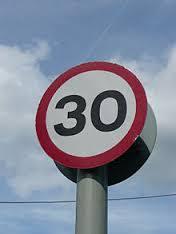 I persist in signalling when there's no one 'who would benefit from the signal.'
I persist in signalling when there's no one 'who would benefit from the signal.'
Above all, I needed to improve my observation and anticipation.
Roy suggested that I go out for another couple of drives with Brian, and then arrange another pre-test run with him. So that's the plan for the next few weeks. And I am to practice, practice, practice. I went out for a drive today, along the Black Country Spine Road - lots of big roundabouts, lots of traffic. I think I did pretty well. I certainly feel happier and more confident.
I frequently disturb the residents of quiet roads by stopping outside their houses, sometimes at midnight and after, to perform left-hand bend reverses, three-point turns, and parallel parking. It's that car again, they think, as they peer through their blinds. That's the fourth time this week it's reversed into our close, spun round and driven off again. Should I call the Police? I'm confident that, if the officers ever turn up, I only have to say, 'Advanced Driving Test,' and all will be clear. Half the mentors and examiners are retired police officers.
 I apologised to Roy and Brian for taking up so much of their free time, and was told to forget it. 'The buzz for us,' Roy said, 'is getting somebody through their test, and thinking, "They're a better, safer driver now, because of me." The IAM says we should get people through in eight weeks, but that's B-S. It takes what it takes. People are all different. Some learn quicker than others - some are more nervous than others. I mean, I had a lady come to me - she was a widow. Had hardly driven at all while her husband was alive, but now he was gone, she needed to drive. It took me a twelve-month to get her through the test, but she passed it, and I was really proud of that.'
I apologised to Roy and Brian for taking up so much of their free time, and was told to forget it. 'The buzz for us,' Roy said, 'is getting somebody through their test, and thinking, "They're a better, safer driver now, because of me." The IAM says we should get people through in eight weeks, but that's B-S. It takes what it takes. People are all different. Some learn quicker than others - some are more nervous than others. I mean, I had a lady come to me - she was a widow. Had hardly driven at all while her husband was alive, but now he was gone, she needed to drive. It took me a twelve-month to get her through the test, but she passed it, and I was really proud of that.'
And when I asked Brian what he drank, so I could buy him a bottle of it, should I ever pass, he said, 'Sue, all I want in return is a phone call from you, saying, "Brian, I passed!" That's all.'
However, I was able to tell him that, while we were in Scotland recently, my partner allowed me to drive his car! Brian flushed with quiet pride. That was something like an accolade.
Still, if I do get through the test, I shall certainly raise a glass to the mentors and examiners of the IAM.
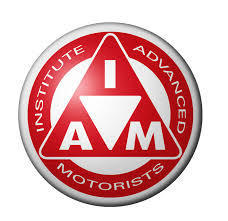 Badge of the Institute of Advanced Motorists
Badge of the Institute of Advanced Motorists
It's a good example of why I'm taking the Advanced Driving Course. I nearly went through a red light last Sunday - while I was taking a 'Pre-Test Trial Run.' Which is not good. It happened less than ten minutes after the drive started and, as my examiner remarked, if it had been a real exam, it would have ended there - and rightly so. What a clogger of a stupid novice mistake.
As it was only a trial (to see how ready I am for the real thing), the test continued, and, in the end, I earned at least a silver
 star and a tick. 'Lovely controlled stop,' my examiner purred, as I drew up at traffic lights. 'Lovely!' he said, as I timed my approach to a roundabout exactly right, with correct speed and gear, and sailed around it without pause (but with 'life-saving glances' to right and left.)
star and a tick. 'Lovely controlled stop,' my examiner purred, as I drew up at traffic lights. 'Lovely!' he said, as I timed my approach to a roundabout exactly right, with correct speed and gear, and sailed around it without pause (but with 'life-saving glances' to right and left.)So I have learned something over all these weeks. The last pre-test run I took, eight weeks into the course, was a disaster. I knew I was nowhere near the required standard, and was proved right. 'We were doing the Churchill,' said the examiner, referring to the noddy-dog in the insurance ads. As so often happens when you're trying to master a new skill, or unlearn old habits and acquire new ones, I'd got worse rather than better. My crashing of gears and sharp braking had my mentor and examiner rocking backwards and forwards in their seats.
So, if I've improved, how come I missed that red light (until the examiner made a great fuss about it?) Well, it was early in the test, and I hadn't settled down. Nerves were getting to me. I know that one of my major failings is not looking far enough ahead and anticipating hazards. (Anything which might make you slow down, brake, or change direction is a hazard. A lot of things come under that heading.) So I was trying very hard to look ahead and
 anticipate. I was so busy studying the far distance, where there was a major roundabout, with traffic-lights, and trying so hard to anticipate what I would have to do when I got there, that I entirely missed the traffic-lights a short distance ahead - just as you miss the gorilla if you're concentrating hard on the players in black clothes. I knew that particular road quite well, too.
anticipate. I was so busy studying the far distance, where there was a major roundabout, with traffic-lights, and trying so hard to anticipate what I would have to do when I got there, that I entirely missed the traffic-lights a short distance ahead - just as you miss the gorilla if you're concentrating hard on the players in black clothes. I knew that particular road quite well, too.It was embarrassing. If I hadn't been driving, I would have kicked myself and punched my own head.
Still, after that stupid mistake, I felt I'd done my worst, and calmed down. I did pretty well after that. (It was all like a repeat of my first driving test, in fact. I failed that because of one gigantic, stupid mistake made in the first few minutes - but then settled down and drove to a far higher standard than I did when I actually passed the test a few weeks later.)
Anyway, on the Advanced Driving Pre-Test, after that first clogger, I drove well enough for my mentor, Brian, to see that all the Sunday mornings he's given up to drive around with me have not been entirely in vain.
 With Roy, the examiner, in the passenger seat, and Brian leaning over from the back-seats, we took a short drive down the M5 and M6, and I was thrilled that Roy considered my motorway driving quite up to the mark. 'You maintained speed and lane discipline, and drove confidently.' If we go out with him for another pre-test run, Roy said, he wouldn't even bother with the motorway. Brian's work there is done.
With Roy, the examiner, in the passenger seat, and Brian leaning over from the back-seats, we took a short drive down the M5 and M6, and I was thrilled that Roy considered my motorway driving quite up to the mark. 'You maintained speed and lane discipline, and drove confidently.' If we go out with him for another pre-test run, Roy said, he wouldn't even bother with the motorway. Brian's work there is done.Back on the quiet roads, I was asked to do a three-point turn, which I managed well enough - but Roy gave me a short lesson on how to do it like a proper Advanced Driver, which was actually great fun. But I kept forgetting to put on the hand-brake, and, in the excitement, crossed my arms on the steering wheel. I'll practice on my own and get it right.
Roy's summing up at the end was that I was nearly at the required standard to pass the test. 'Just a bit more honing and polishing needed.' There were a few times when I'd exceeded the mandatory speed limit (another regular failing of mine) and times when, although obeying the speed-limit, I was still going too fast for the road conditions. On the motorway, I'd started signalling correctly at the three-hundred yard sign, but had cancelled my signal before I was fully on the slip-road.
 I persist in signalling when there's no one 'who would benefit from the signal.'
I persist in signalling when there's no one 'who would benefit from the signal.' Above all, I needed to improve my observation and anticipation.
Roy suggested that I go out for another couple of drives with Brian, and then arrange another pre-test run with him. So that's the plan for the next few weeks. And I am to practice, practice, practice. I went out for a drive today, along the Black Country Spine Road - lots of big roundabouts, lots of traffic. I think I did pretty well. I certainly feel happier and more confident.
I frequently disturb the residents of quiet roads by stopping outside their houses, sometimes at midnight and after, to perform left-hand bend reverses, three-point turns, and parallel parking. It's that car again, they think, as they peer through their blinds. That's the fourth time this week it's reversed into our close, spun round and driven off again. Should I call the Police? I'm confident that, if the officers ever turn up, I only have to say, 'Advanced Driving Test,' and all will be clear. Half the mentors and examiners are retired police officers.
 I apologised to Roy and Brian for taking up so much of their free time, and was told to forget it. 'The buzz for us,' Roy said, 'is getting somebody through their test, and thinking, "They're a better, safer driver now, because of me." The IAM says we should get people through in eight weeks, but that's B-S. It takes what it takes. People are all different. Some learn quicker than others - some are more nervous than others. I mean, I had a lady come to me - she was a widow. Had hardly driven at all while her husband was alive, but now he was gone, she needed to drive. It took me a twelve-month to get her through the test, but she passed it, and I was really proud of that.'
I apologised to Roy and Brian for taking up so much of their free time, and was told to forget it. 'The buzz for us,' Roy said, 'is getting somebody through their test, and thinking, "They're a better, safer driver now, because of me." The IAM says we should get people through in eight weeks, but that's B-S. It takes what it takes. People are all different. Some learn quicker than others - some are more nervous than others. I mean, I had a lady come to me - she was a widow. Had hardly driven at all while her husband was alive, but now he was gone, she needed to drive. It took me a twelve-month to get her through the test, but she passed it, and I was really proud of that.'And when I asked Brian what he drank, so I could buy him a bottle of it, should I ever pass, he said, 'Sue, all I want in return is a phone call from you, saying, "Brian, I passed!" That's all.'
However, I was able to tell him that, while we were in Scotland recently, my partner allowed me to drive his car! Brian flushed with quiet pride. That was something like an accolade.
Still, if I do get through the test, I shall certainly raise a glass to the mentors and examiners of the IAM.
 Badge of the Institute of Advanced Motorists
Badge of the Institute of Advanced Motorists
Published on September 13, 2013 16:05
September 6, 2013
A Review: THE STORM BOTTLE by Nick Green
I’ve heard consistently good things about Nick Green’s novels, –
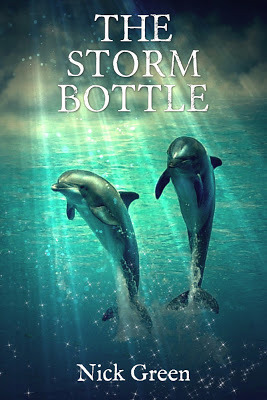 'The Storm Bottle' by Nick Greenand I know him to be a witty blogger – but this is the first book of his I’ve read.
'The Storm Bottle' by Nick Greenand I know him to be a witty blogger – but this is the first book of his I’ve read.
It’s a beautiful, transporting fantasy, set in Bermuda. The heat, the seas, the colours and scents, the sea-breezes of the island are a constant, and wonderfully evoked. I’ve never been to Bermuda, but after reading this book, I felt I had a sense of it. There’s one phrase, describing the aftermath of a tropical storm – the ‘shaken tin-foil glitter’ of the bright sun shining on the wet island. I could see it.
The book concerns characters who are out of place. The engaging heroine, Bibi, has felt out of place for her entire life. She’s a tom-boy, and bound up with the grief she feels for her dead mother is the knowledge that she was never the girlie-girl her mother wanted.
Her relationship with her rich father is amiable rather than close. So long as they can talk about sailing and boats, they get along fine. But Bibi rather scorns her father’s big, expensive boat. She prefers the little sailing boat belonging to her Bermudan friend, Hal, because sailing it brings her closer to the winds and currents. She loves Bermuda and its seas passionately.
Her father has married again, and this marriage has provided Bibi with a step-brother, Michael. He has been ripped from his scholarship-pace at choir-school, from his friends, from Britain – and is truly out of place in hot, bright Bermuda. He is sulky and resentful.
Bibi does her best to befriend him, trying to interest him in sailing and her pirate games, but he is unresponsive until, out sailing on Hal’s boat, they see a wild dolphin. Michael is so excited by the thought of swimming with it that Bibi almost likes him. Both of them dive in and, to her surprise Bibi, who has swum all her life, finds that Michael is the stronger swimmer.
This leads him into trouble, however. Despite Hal’s warnings, he ventures too far from the boat and is caught in the current.
Bibi thinks he is lost when, ‘Foam unzipped the waves and Michael’s pale body washed up into the sunshine…[Bibi] saw a crescent fin, a glass-boulder forehead. The dolphin…had returned.’ A 'glass-boulder forehead' - Nick Green has a knack for hitting on the perfect descriptive phrase.
But the dolphin has done more than return Michael to the surface. To save his life, it has exchanged souls with him.
If you can make this imaginative leap, whether young adult or older adult, you will love this book. If you can’t, you probably won’t. If you think all fantasy is daft, then you’ll think this daft too.
Fantasy is like any other genre. It can be written simplistically, as nothing but wish-fulfillment or gimmickry – and that sort of writing tends to be daft, whether it’s written in the Romance genre, or Crime, Science-Fiction or Thriller.
Or, as with any other genre, Fantasy can be written thoughtfully. It can be used as a way of alienating us from the everyday world we take for granted, so that we have to re-examine and re-evaluate it. Storm Bottle does this.
After the accident, the book follows Bibi on shore, and Michael in his new life.
On shore, in hospital, Michael is in a coma, and when he wakes, his confusion is assumed to be caused by brain-damage. His desperate mother smothers him with protective love. His new step-father withdraws, unable to cope – just as he withdrew from Bibi after her mother’s death, becoming an amiable but distant workaholic.
Only Bibi tries to understand the boy on his own terms. It is she who realises that the boy is not a brain-damaged Michael, but someone - something - else altogether.
Meanwhile, out at sea, Michael is also coming to terms with a whole new body and way of life. He finds himself swimming with a dolphin pod – two males, Pedro and Sancho, and an injured female, Jill, who is considered, by the males, to be their ‘property.’
The story may have fantastical elements, but the account of dolphin life is based on reality. These dolphins are not the cute, winsome mascots of New Age Harmony seen on a thousand posters, mouse-mats, t-shirts, pendents etc. They are predators, hunting and killing prey, and being hunted as prey by others.
They are intelligent, and they communicate – their clicks and whistles are translated into words for our benefit. But their intelligence is mostly used for catching fish, fighting with other dolphins, escaping from sharks and killer-whales – and capturing females, because the more females a pod has, the more status it has.
The chapters about Michael’s dolphin life are fascinating and often beautiful. The dolphins call themselves ‘rainvoices’, because the sounds they make are like rain falling on the ocean’s surface. They teach Michael how to use his dolphin-body’s ‘voice-eye’, or sonar.
Jill, the injured dolphin, is the sister of the dolphin Michael has become, and looks to him for food she can no longer catch for herself. Her injury has been caused by a fishing line which has wrapped itself round her tail, drawing tighter and tighter until it has sliced off a fin. Michael, with his human understanding, is able to see how to unravel it, and saves her from further injury – and from the endurance of constant pain.
Whereas his step-sister on land, Bibi, was tough and, in many ways, braver and more knowledgable than him, he now finds himself with an adoptive sister who, though more knowledgeable about life underwater, is also more helpless. In taking over as her protector and helper, he becomes close to her. In short, the sulky boy has to dolphin-up – but doesn’t always succeed. After all, as the dolphin Jill observes, ‘You are just a child, aren’t you?’
Michael seeks a way back to his own body and life on land. The other dolphins don’t know how to help, but lead him on a journey to consult ‘The Tidings.’ Michael understands this as some sort of archive, and is puzzled as to how such a thing can exist – until he discovers it to be the long, long memories of Humpback Whales, known to the dolphins as ‘Deep Singers.’
The whales remember a similar exchange of souls in the distant past, and give Michael hope that he can return to his own body.
Meanwhile, on land, Bibi and Rodrigez, the dolphin-in-human-form, have devised a way to send a message to Michael, using ‘a message in a bottle.’ Bibi sacrifices her beloved collection of antique bottles, throwing them into the sea with a one-word clue. They hope that the sea-borne Michael will find one of the bottles, decipher the clue, and so meet them at a certain cove where, perhaps, they can swop bodies again.
But their plans are disrupted when Michael’s mother leaves Bibi’s father. She intends to take her son home to Britain.
This forces the two young people to run away, and camp out on one of Bermuda’s off-shore islands, while the police search for them.
The finale brings together dolphins, human children and a great storm. I don’t think it will be giving away too much to say that Michael succeeds in returning to his human body – but Nick Green bravely resists the neat ending. He goes beyond that, and provides a more original ending, but one that is right for the book, and the characters.
A beautiful, invigorating fantasy, full of sea and sun, and deep, cool waters.
But also a fantasy which, by distorting reality, looks at how, if you are at odds with your surroundings, and feel you don’t fit, you can grow into your situation – or, with courage, break free of it and follow your own way.
The Storm Bottle
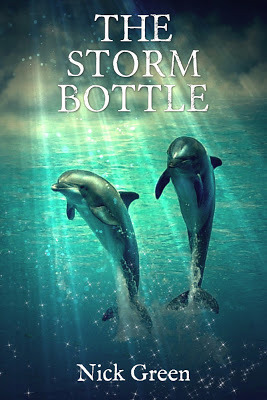
 'The Storm Bottle' by Nick Greenand I know him to be a witty blogger – but this is the first book of his I’ve read.
'The Storm Bottle' by Nick Greenand I know him to be a witty blogger – but this is the first book of his I’ve read.It’s a beautiful, transporting fantasy, set in Bermuda. The heat, the seas, the colours and scents, the sea-breezes of the island are a constant, and wonderfully evoked. I’ve never been to Bermuda, but after reading this book, I felt I had a sense of it. There’s one phrase, describing the aftermath of a tropical storm – the ‘shaken tin-foil glitter’ of the bright sun shining on the wet island. I could see it.
The book concerns characters who are out of place. The engaging heroine, Bibi, has felt out of place for her entire life. She’s a tom-boy, and bound up with the grief she feels for her dead mother is the knowledge that she was never the girlie-girl her mother wanted.
Her relationship with her rich father is amiable rather than close. So long as they can talk about sailing and boats, they get along fine. But Bibi rather scorns her father’s big, expensive boat. She prefers the little sailing boat belonging to her Bermudan friend, Hal, because sailing it brings her closer to the winds and currents. She loves Bermuda and its seas passionately.
Her father has married again, and this marriage has provided Bibi with a step-brother, Michael. He has been ripped from his scholarship-pace at choir-school, from his friends, from Britain – and is truly out of place in hot, bright Bermuda. He is sulky and resentful.
Bibi does her best to befriend him, trying to interest him in sailing and her pirate games, but he is unresponsive until, out sailing on Hal’s boat, they see a wild dolphin. Michael is so excited by the thought of swimming with it that Bibi almost likes him. Both of them dive in and, to her surprise Bibi, who has swum all her life, finds that Michael is the stronger swimmer.
This leads him into trouble, however. Despite Hal’s warnings, he ventures too far from the boat and is caught in the current.
Bibi thinks he is lost when, ‘Foam unzipped the waves and Michael’s pale body washed up into the sunshine…[Bibi] saw a crescent fin, a glass-boulder forehead. The dolphin…had returned.’ A 'glass-boulder forehead' - Nick Green has a knack for hitting on the perfect descriptive phrase.
But the dolphin has done more than return Michael to the surface. To save his life, it has exchanged souls with him.
If you can make this imaginative leap, whether young adult or older adult, you will love this book. If you can’t, you probably won’t. If you think all fantasy is daft, then you’ll think this daft too.
Fantasy is like any other genre. It can be written simplistically, as nothing but wish-fulfillment or gimmickry – and that sort of writing tends to be daft, whether it’s written in the Romance genre, or Crime, Science-Fiction or Thriller.
Or, as with any other genre, Fantasy can be written thoughtfully. It can be used as a way of alienating us from the everyday world we take for granted, so that we have to re-examine and re-evaluate it. Storm Bottle does this.
After the accident, the book follows Bibi on shore, and Michael in his new life.
On shore, in hospital, Michael is in a coma, and when he wakes, his confusion is assumed to be caused by brain-damage. His desperate mother smothers him with protective love. His new step-father withdraws, unable to cope – just as he withdrew from Bibi after her mother’s death, becoming an amiable but distant workaholic.
Only Bibi tries to understand the boy on his own terms. It is she who realises that the boy is not a brain-damaged Michael, but someone - something - else altogether.
Meanwhile, out at sea, Michael is also coming to terms with a whole new body and way of life. He finds himself swimming with a dolphin pod – two males, Pedro and Sancho, and an injured female, Jill, who is considered, by the males, to be their ‘property.’
The story may have fantastical elements, but the account of dolphin life is based on reality. These dolphins are not the cute, winsome mascots of New Age Harmony seen on a thousand posters, mouse-mats, t-shirts, pendents etc. They are predators, hunting and killing prey, and being hunted as prey by others.
They are intelligent, and they communicate – their clicks and whistles are translated into words for our benefit. But their intelligence is mostly used for catching fish, fighting with other dolphins, escaping from sharks and killer-whales – and capturing females, because the more females a pod has, the more status it has.
The chapters about Michael’s dolphin life are fascinating and often beautiful. The dolphins call themselves ‘rainvoices’, because the sounds they make are like rain falling on the ocean’s surface. They teach Michael how to use his dolphin-body’s ‘voice-eye’, or sonar.
Jill, the injured dolphin, is the sister of the dolphin Michael has become, and looks to him for food she can no longer catch for herself. Her injury has been caused by a fishing line which has wrapped itself round her tail, drawing tighter and tighter until it has sliced off a fin. Michael, with his human understanding, is able to see how to unravel it, and saves her from further injury – and from the endurance of constant pain.
Whereas his step-sister on land, Bibi, was tough and, in many ways, braver and more knowledgable than him, he now finds himself with an adoptive sister who, though more knowledgeable about life underwater, is also more helpless. In taking over as her protector and helper, he becomes close to her. In short, the sulky boy has to dolphin-up – but doesn’t always succeed. After all, as the dolphin Jill observes, ‘You are just a child, aren’t you?’
Michael seeks a way back to his own body and life on land. The other dolphins don’t know how to help, but lead him on a journey to consult ‘The Tidings.’ Michael understands this as some sort of archive, and is puzzled as to how such a thing can exist – until he discovers it to be the long, long memories of Humpback Whales, known to the dolphins as ‘Deep Singers.’
‘The humpack whale was too far ahead to see, even with his voice eye. Yet its song built majestic architectures around him, pillars of tone and melodious arches, bearing the weight of words.’
The whales remember a similar exchange of souls in the distant past, and give Michael hope that he can return to his own body.
Meanwhile, on land, Bibi and Rodrigez, the dolphin-in-human-form, have devised a way to send a message to Michael, using ‘a message in a bottle.’ Bibi sacrifices her beloved collection of antique bottles, throwing them into the sea with a one-word clue. They hope that the sea-borne Michael will find one of the bottles, decipher the clue, and so meet them at a certain cove where, perhaps, they can swop bodies again.
But their plans are disrupted when Michael’s mother leaves Bibi’s father. She intends to take her son home to Britain.
This forces the two young people to run away, and camp out on one of Bermuda’s off-shore islands, while the police search for them.
The finale brings together dolphins, human children and a great storm. I don’t think it will be giving away too much to say that Michael succeeds in returning to his human body – but Nick Green bravely resists the neat ending. He goes beyond that, and provides a more original ending, but one that is right for the book, and the characters.
A beautiful, invigorating fantasy, full of sea and sun, and deep, cool waters.
But also a fantasy which, by distorting reality, looks at how, if you are at odds with your surroundings, and feel you don’t fit, you can grow into your situation – or, with courage, break free of it and follow your own way.
The Storm Bottle

Published on September 06, 2013 16:05
August 30, 2013
The Return of Pedro
On September 2nd, Picadilly Press publish 'We're Having A
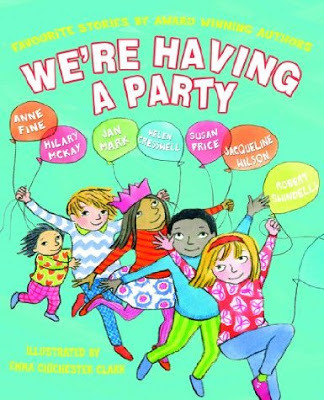 'We're Having A Party!' - 30 years of children's booksParty' to celebrate their 30 years of publishing for children.
'We're Having A Party!' - 30 years of children's booksParty' to celebrate their 30 years of publishing for children.
In one volume, they've brought together seven short stories - enough for one every day, or bedtime, or bath-time, for a week.
The book is illustrated by Emma Chichester Clark, and its stories are 'about everything from imaginary friends to following Mum’s orders, an amazing dog to unexpected neighbours...'
They have been written by a roll-call of excellent, acclaimed writers for children: Anne Fine, Jan Mark, Jacqueline Wilson, Helen Cresswell, Robert Swindells and Hilary McKay.
It costs £7-99, and would make a very good Christmas present. Or birthday present. Or unbirthday present, come to that.
What is my interest in this book? Well, that amazing dog... His name is Pedro, and I wrote him.
I've got even more attachment to him than that, because 'Pedro' is an almost entirely true story - apart from a little narrative tweaking here and there. Pedro belonged to my great-grandmother.
I was raised on stories of my parents' childhoods - 'Tell us about Christmas when you were little, Mom.' And then we heard about the orange in the stocking's toe, the white enamel bucket filled with nuts, the pink and white sugar mice. Or we heard about how her brothers fought - or how they dressed one brother up as a guy, and towed him round the streets in a buggy, begging for, 'A penny for the guy.'
My father countered with stories of damming brooks, or seeing spitfires flying overhead, or filling his mother's washing-boiler with tadpoles. (And hilarity ensued? Not with my grandmother, it didn't.)
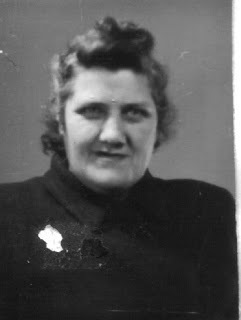 Dare you to fill this woman's boiler with tadpoles! They also told us stories from the previous generation - stories that their parents had told to them, about their childhoods. So we heard about our mother's mother going out to work at ten, or walking 12 miles every day to work in the glassworks.
Dare you to fill this woman's boiler with tadpoles! They also told us stories from the previous generation - stories that their parents had told to them, about their childhoods. So we heard about our mother's mother going out to work at ten, or walking 12 miles every day to work in the glassworks.
My father told us how his father started work, in 1912, aged 12, and how he'd been an ostler with enormous great cart-horses. Another tale told of Great-Grandad's nightly attempts to put the cat out.
Great Grandad was always a little befuddled by bedtime, and every night my Grandad (who slept on the floor under the kitchen table) would watch as his father caught the cat, unlocked the many locks and bolts on the door, caught the cat again, put the cat outside - after a struggle involving the cat bracing its legs against the door-frame - closed and re-bolted and relocked the door, and finally started up the stairs to bed. Half-way up, he always met the cat coming down on its way back to the warm kitchen again.
Swearing, Great-Grandad would start the whole cat-wrangling performance again. What he didn't know - but which my young grandad sniggering with his brother under the table did know - was that the cat simply climbed the crumbling cottage wall and got into the upstairs room through a broken pane which had been blocked with cardboard. It pushed the cardboard aside with its head, jumped inside and scooted down the stairs, back to the fire. To have pointed this out, though, would have spoiled the nightly show.
I loved these stories. Another great favourite was the tale of my paternal Great-Grandmother (wife of the befuddled cat-dupe) and her corgi, Pedro. This was the woman and the dog who convinced several Polish emigrees that all the stories they'd heard were true, and the English were quite mad.
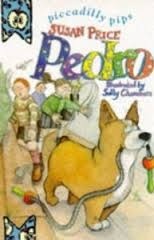 Original 1996 cover So when, in 1996, Picadilly asked me for a funny story, I wrote down the family story of Pedro. I can't decide whether it was my Great-Grandmother or the dog who was more eccentric, but I thought their story deserved to be passed on.
Original 1996 cover So when, in 1996, Picadilly asked me for a funny story, I wrote down the family story of Pedro. I can't decide whether it was my Great-Grandmother or the dog who was more eccentric, but I thought their story deserved to be passed on.
I never worried about dates when I sat listening to these stories, but I suppose the years when my Great-Gran doted on Pedro were either just before or just after the Second World War.
It would spoil the story to give away much of it here - but I will warn you that the ending is unavoidably sad. Dogs don't live for ever. I don't apologise for this, though. I think adults often try too hard to protect children from the harshness of the world. I've said in another blog that as soon as I was able to read a favourite book of animal stories for myself, I gravitated to the more tragic stories - whereas my father had only read me the lighter, more comic ones.
When I read stories aloud to my younger brother, I noticed that those he asked for most often were the ones that made him sob. I would say, "You don't want to hear that one again, do you? It made you cry." He would insist that he wanted, more than any other, to hear the sad story again. There was obviously something in the story that he needed and wanted to hear.
So I decided not to hide Pedro's sad end. After all, he had a very good and happy life. It might have been short - but his memory lives on!
We're Having A Party!
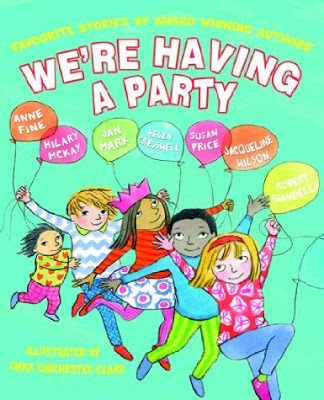
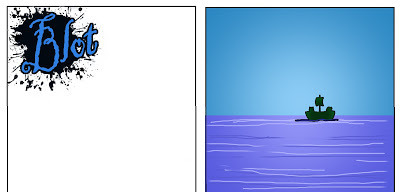
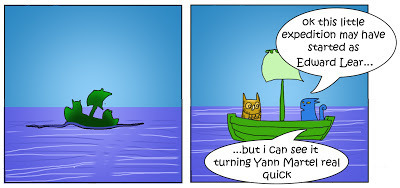
 'We're Having A Party!' - 30 years of children's booksParty' to celebrate their 30 years of publishing for children.
'We're Having A Party!' - 30 years of children's booksParty' to celebrate their 30 years of publishing for children.In one volume, they've brought together seven short stories - enough for one every day, or bedtime, or bath-time, for a week.
The book is illustrated by Emma Chichester Clark, and its stories are 'about everything from imaginary friends to following Mum’s orders, an amazing dog to unexpected neighbours...'
They have been written by a roll-call of excellent, acclaimed writers for children: Anne Fine, Jan Mark, Jacqueline Wilson, Helen Cresswell, Robert Swindells and Hilary McKay.
It costs £7-99, and would make a very good Christmas present. Or birthday present. Or unbirthday present, come to that.
What is my interest in this book? Well, that amazing dog... His name is Pedro, and I wrote him.
I've got even more attachment to him than that, because 'Pedro' is an almost entirely true story - apart from a little narrative tweaking here and there. Pedro belonged to my great-grandmother.
I was raised on stories of my parents' childhoods - 'Tell us about Christmas when you were little, Mom.' And then we heard about the orange in the stocking's toe, the white enamel bucket filled with nuts, the pink and white sugar mice. Or we heard about how her brothers fought - or how they dressed one brother up as a guy, and towed him round the streets in a buggy, begging for, 'A penny for the guy.'
My father countered with stories of damming brooks, or seeing spitfires flying overhead, or filling his mother's washing-boiler with tadpoles. (And hilarity ensued? Not with my grandmother, it didn't.)
 Dare you to fill this woman's boiler with tadpoles! They also told us stories from the previous generation - stories that their parents had told to them, about their childhoods. So we heard about our mother's mother going out to work at ten, or walking 12 miles every day to work in the glassworks.
Dare you to fill this woman's boiler with tadpoles! They also told us stories from the previous generation - stories that their parents had told to them, about their childhoods. So we heard about our mother's mother going out to work at ten, or walking 12 miles every day to work in the glassworks.My father told us how his father started work, in 1912, aged 12, and how he'd been an ostler with enormous great cart-horses. Another tale told of Great-Grandad's nightly attempts to put the cat out.
Great Grandad was always a little befuddled by bedtime, and every night my Grandad (who slept on the floor under the kitchen table) would watch as his father caught the cat, unlocked the many locks and bolts on the door, caught the cat again, put the cat outside - after a struggle involving the cat bracing its legs against the door-frame - closed and re-bolted and relocked the door, and finally started up the stairs to bed. Half-way up, he always met the cat coming down on its way back to the warm kitchen again.
Swearing, Great-Grandad would start the whole cat-wrangling performance again. What he didn't know - but which my young grandad sniggering with his brother under the table did know - was that the cat simply climbed the crumbling cottage wall and got into the upstairs room through a broken pane which had been blocked with cardboard. It pushed the cardboard aside with its head, jumped inside and scooted down the stairs, back to the fire. To have pointed this out, though, would have spoiled the nightly show.
I loved these stories. Another great favourite was the tale of my paternal Great-Grandmother (wife of the befuddled cat-dupe) and her corgi, Pedro. This was the woman and the dog who convinced several Polish emigrees that all the stories they'd heard were true, and the English were quite mad.
 Original 1996 cover So when, in 1996, Picadilly asked me for a funny story, I wrote down the family story of Pedro. I can't decide whether it was my Great-Grandmother or the dog who was more eccentric, but I thought their story deserved to be passed on.
Original 1996 cover So when, in 1996, Picadilly asked me for a funny story, I wrote down the family story of Pedro. I can't decide whether it was my Great-Grandmother or the dog who was more eccentric, but I thought their story deserved to be passed on.I never worried about dates when I sat listening to these stories, but I suppose the years when my Great-Gran doted on Pedro were either just before or just after the Second World War.
It would spoil the story to give away much of it here - but I will warn you that the ending is unavoidably sad. Dogs don't live for ever. I don't apologise for this, though. I think adults often try too hard to protect children from the harshness of the world. I've said in another blog that as soon as I was able to read a favourite book of animal stories for myself, I gravitated to the more tragic stories - whereas my father had only read me the lighter, more comic ones.
When I read stories aloud to my younger brother, I noticed that those he asked for most often were the ones that made him sob. I would say, "You don't want to hear that one again, do you? It made you cry." He would insist that he wanted, more than any other, to hear the sad story again. There was obviously something in the story that he needed and wanted to hear.
So I decided not to hide Pedro's sad end. After all, he had a very good and happy life. It might have been short - but his memory lives on!
We're Having A Party!



Published on August 30, 2013 16:05
August 29, 2013
August 23, 2013
Come And Turn The Page
My cousin, Alan Hess and I recently made an appearance at
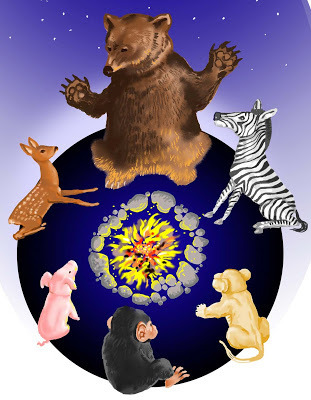 Stories for Learning: Art work copyright Andrew Pricethe On-Line Edinburgh eBook Festival, now in its final weekend.
Stories for Learning: Art work copyright Andrew Pricethe On-Line Edinburgh eBook Festival, now in its final weekend.
We did a presentation about the bee in our bonnet, Functional Grammar, and how it can help children - and older people - improve their reading and writing skills.
Click on the links below for an explanation and a demo of what we're working on.
This is a prototype, so when you click on the link, it may take a few seconds for the programme to assemble itself into a 'book'.
When it does - and it will take seconds - you'll be able to get a better idea of what we're aiming at, and how it will work. You'll be able to use the tools, and get a better idea of how this might work in a classroom.
Note: the 'little lego brick icons' mentioned in part one are along the top of the page.
Clicking on a link opens a new window.
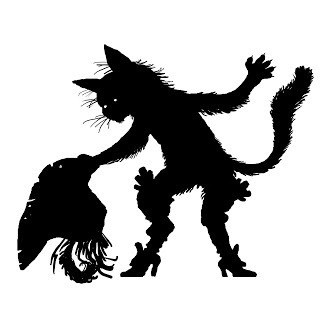 Art work: copyright Andrew Price
Art work: copyright Andrew Price
Click here for Part One
In Part Two, do have a play with the 'hot potato' games, and the 'rewrite the text tool.' This part ends with links to videos explaining things in a little more detail.
Click here for Part Two
Alan has recently programmed an edit tool which allows anyone to take any text and quickly insert the HTML codes to make these games work. It's brilliant.
Here, for completion, is a link to Dr. David Rose, of Sydney University, speaking on his reading strategy, 'Reading to Learn.'
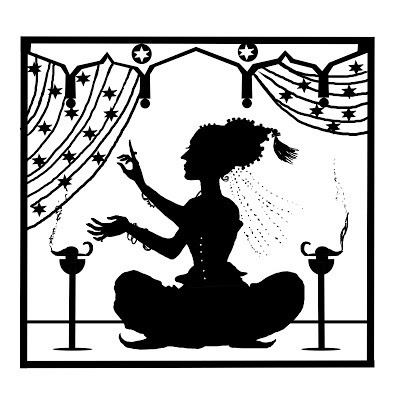 Scherherazade: Saving lives by telling stories
Scherherazade: Saving lives by telling stories
All Art work: copyright Andrew Price.
_____________________________________________________
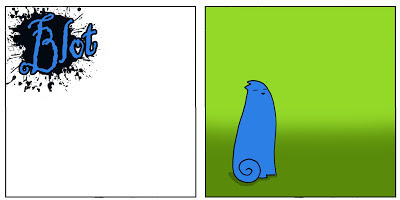
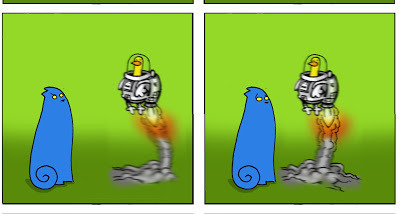
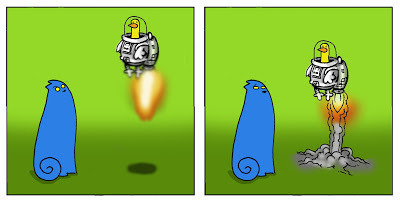
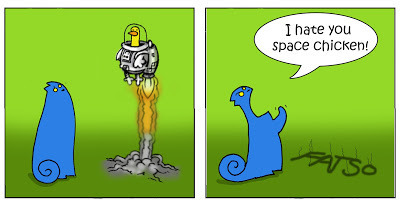
 Stories for Learning: Art work copyright Andrew Pricethe On-Line Edinburgh eBook Festival, now in its final weekend.
Stories for Learning: Art work copyright Andrew Pricethe On-Line Edinburgh eBook Festival, now in its final weekend.We did a presentation about the bee in our bonnet, Functional Grammar, and how it can help children - and older people - improve their reading and writing skills.
Click on the links below for an explanation and a demo of what we're working on.
This is a prototype, so when you click on the link, it may take a few seconds for the programme to assemble itself into a 'book'.
When it does - and it will take seconds - you'll be able to get a better idea of what we're aiming at, and how it will work. You'll be able to use the tools, and get a better idea of how this might work in a classroom.
Note: the 'little lego brick icons' mentioned in part one are along the top of the page.
Clicking on a link opens a new window.
 Art work: copyright Andrew Price
Art work: copyright Andrew PriceClick here for Part One
In Part Two, do have a play with the 'hot potato' games, and the 'rewrite the text tool.' This part ends with links to videos explaining things in a little more detail.
Click here for Part Two
Alan has recently programmed an edit tool which allows anyone to take any text and quickly insert the HTML codes to make these games work. It's brilliant.
Here, for completion, is a link to Dr. David Rose, of Sydney University, speaking on his reading strategy, 'Reading to Learn.'
 Scherherazade: Saving lives by telling stories
Scherherazade: Saving lives by telling storiesAll Art work: copyright Andrew Price.
_____________________________________________________




Published on August 23, 2013 16:05
August 16, 2013
Moebius and Stones
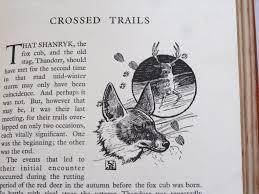 From 'Kallee and Other Stories' I'm still sorting through all the stuff we had to clear from my late parents' house before we sold it. Not just their stuff, but the stuff they'd kept belonging to four children.
From 'Kallee and Other Stories' I'm still sorting through all the stuff we had to clear from my late parents' house before we sold it. Not just their stuff, but the stuff they'd kept belonging to four children.A lot of favourite old things came to light. I've already blogged about one here - the book, Kallee and Other Stories by F. G. Turnbull.
But we keep on finding other things.
My Dad worked as a electrical rewinder. That is, he repaired electric motors, rewound their coils when they were burned out, replaced ball-bearings. He had to calculate the thickness of copper wire required and the number of turns needed to carry the required voltage. The number of coils altered according to the gauge of wire. Ball-bearings too, had to be ground to exact dimensions. Decades before the metric system was officially introduced, Dad was working in 'thous', meaning millimetres.
(An aside, but I remember making a special trip to buy him
 Casio Calculator: Wiki commonsone of the first calculators, which was nearly the size of brick. This would have been the late '70s or early '80s. I had to club together with other family to afford it, and it had to be a 'scientific calculator', to be capable of the calculations Dad had to do. 'Do you really think he'll get any use out of it?' my mother asked anxiously, when she saw how much it cost. Any use? He wore it out. He was so thrilled with it, he almost smiled when we gave it him.)
Casio Calculator: Wiki commonsone of the first calculators, which was nearly the size of brick. This would have been the late '70s or early '80s. I had to club together with other family to afford it, and it had to be a 'scientific calculator', to be capable of the calculations Dad had to do. 'Do you really think he'll get any use out of it?' my mother asked anxiously, when she saw how much it cost. Any use? He wore it out. He was so thrilled with it, he almost smiled when we gave it him.)Anyhow, Dad worked with a lot of copper wire. As children, some of our play-things were twists of pretty copper wire, and old ball-bearings (some as big as golf-balls.)
One of the things saved from my parents' house is this.
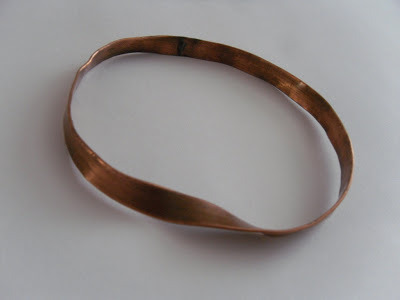
It's a Moebius Strip, made from a piece of scrap copper. Dad read about this curious geometric figure - 'a surface with only one side and only one boundary component,' and he wanted to make one.
He took a strip of copper, gave it a half-twist, joined the two ends and soldered them together. Run your finger around the side or the edge and it returns to the spot where you began without your ever having to lift your finger from the surface. It's the same with the sides. It's a two-dimensional object: it has only one edge and one surface.
Dad stamped my name on the strip and gave it to me as a paper-weight. I don't think I've ever used a paper-weight, but I still have the Strip. I always loved the bright, orangey colour of the copper wire, and I think Dad's Moebuis Strip is a beautiful thing.

A friend, Leslie Wilson, sent me a 'seer-stone' as a little gift once, It's a flint with a hole right through - a hole bored by natural forces. Such stones have always been regarded as magical, and one was said to have been owned by the Brahan Seer. He called his an 'adder stone'.
For some time now I've kept my seer-stone inside the moebius strip, in dogged expectation, or hope, of something weird happening. I'm not quite sure what.
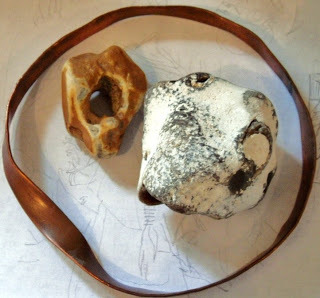
The small, brown stone is Leslie's gift. The larger one was given me by Davy, on his return from a trip when I couldn't accompany him. It's holed, revealing interesting little matrices in the stone, but the hole doesn't go all the way through.
The stones and the moebius, working together, have produced nothing. As far as I know. Yet.
But all three together? They have to constitute a charm, at the very least.
And there's a Blott this week. Maybe the 'fluence of stones and strip can get us one for next week too, if we're lucky.
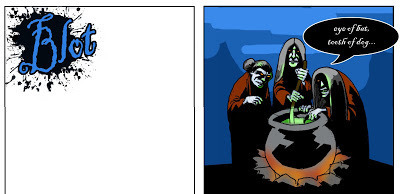
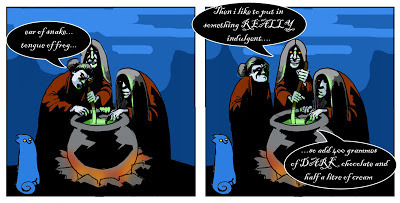
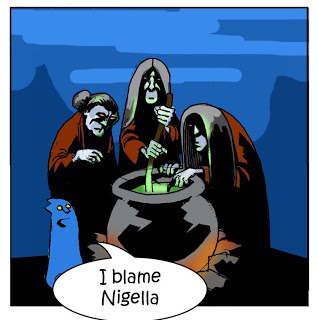
Published on August 16, 2013 16:05
August 9, 2013
A Book Festival Round At Yours...

Starting on Monday, we're holding a book festival round at
yours...
Well, if you want to, that is.
You don't have to let us through the door - or, rather, through the computer. But if you like books, and e-books especially - if you like writers and writing, it might be worth taking a look.
The Edinburgh eBook Festival 2013 starts on Monday August 12th and run every day for a fortnight. And it's free.
This wonderful idea was writer Cally Phillips', and she has heroically
 Writer Cally Phillipsorganised the whole thing from her fastness up in Aberdeenshire.
Writer Cally Phillipsorganised the whole thing from her fastness up in Aberdeenshire.The Festival focusses on ebooks and, just as ebooks are sold all over the world in defiance of borders, so the ebook festival can be attended by anyone, from anywhere in the world, so long as they have some kind of device that can connect to the web.
It should really be called The NOT The Edinburgh (eBook) Festival. It's got nothing to do with Edinburgh. It's virtual, it's everywhere - it's in your house and mine, on the train, on the bus, on the ferry and wherever there is wi-fi.
But it's Cally's festival and she can call it what she likes.
You don't have to be able to afford to get to Edinburgh, and then to stay in Edinburgh, or buy tickets. You can attend events in your jim-jams, if you like, while lying on your sofa. You can attend life-writing workshops while sitting in your socks and underpants and drinking beer. If you want. (Though Cally does ask that you don't attempt to join in while driving.)
 Derek: Weather Sheep Every Festival has to have a big STAR, of course, to draw in the punters - and the big celebrity draw at the EeF this year is - ta-da! - Derek the Weather Sheep, fresh from his battle with Facebook, where he spoke up for the freedom and dignity of sheep everywhere.
Derek: Weather Sheep Every Festival has to have a big STAR, of course, to draw in the punters - and the big celebrity draw at the EeF this year is - ta-da! - Derek the Weather Sheep, fresh from his battle with Facebook, where he spoke up for the freedom and dignity of sheep everywhere.Besides Derek, there will be crime writers, sci-fi writers, horror writers, romance writers and writers who are hard to categorise. There will be workshops, discussions, reviews, ideas, recommends, and FREE ebooks. (And the Festival is free, did I mention?)
There will be music, there will be laughter. The beer, wine and horlicks will flow freely, as will the chocolate (but only if you supply it.)
Each day will start at 10am, with an overview of all the events for that day. You'll be able to lunch with an author throughout the fortnight; and each day will wind up, at 11pm, with reflections
You can follow the Festival on Twitter at @edebookfest
You can find more news on Facebook, here.
And you can find the Festival itself HERE.
Follow the link to find out a lot more about the events on offer, and the writers involved.
I shall be showing up myself on the 17th and 18th, along with my colleague, Alan Hess, and we'll be demonstrating our interactive reading books.
______________________________________________________
Functional Literacy workshop with Sue Price (and Alan Hess)

This is an ‘offsite’ opportunity for you to find out more about ‘functional literacy’ and how ebooks and the online experience can open new doors for readers. Authors Electric founder Sue Price guides you through a DIY workshop experience where you can explore the concept of functional literacy for yourself.
______________________________________________________
I'll be seeing you at the Festival, I hope?
Published on August 09, 2013 16:05
August 2, 2013
A Witch-Queen In The God's Mound?
This, the Oseberg ship, has been called the most beautiful
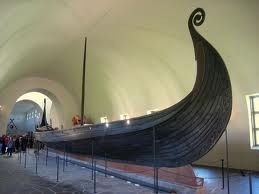 ship ever built.
ship ever built.
Today, of course, it’s priceless. When it was built, it was, to say the least, ‘a high-status artefact.’ But it’s hard to form an idea of just how valuable it was when first made.
In the Viking Age, cold and hunger, even starvation, were always near: just one bad season away.
To keep hunger at bay, the time and labour of many people was needed. Fields had to be planted, weeded, harvested. Animals had to be tended, fish and game caught. Fuel was constantly needed, for cooking and brewing, and had to be found or cut, and stored for winter. Food had to be carefully stored, to preserve it: smoked, dried, salted. Milk had to be turned into cheese and butter. Wool and flax had to be spun into thread and woven into cloth. Barns had to be kept in repair, walls and tools mended.
This ship represents months, perhaps years, of labour that produced neither food nor fuel. Indeed, it consumed food and fuel, as the shipwrights had to be fed and housed by the labour of others. A ship of this quality wasn't built by farmers in their spare time.
 The prow The Vikings were expert shipwrights, but the Oseberg isn't merely utilitarian. It's exquisite, almost an art object. Look at the lines of her. Look at that beautiful prow, like a piece of sculpture. Look at the carving, probably once painted and gilded.
The prow The Vikings were expert shipwrights, but the Oseberg isn't merely utilitarian. It's exquisite, almost an art object. Look at the lines of her. Look at that beautiful prow, like a piece of sculpture. Look at the carving, probably once painted and gilded.
 The carving This ship was an expression of staggering wealth, status and power. They built her, at all this expense, and then they threw her away: – they buried her.
The carving This ship was an expression of staggering wealth, status and power. They built her, at all this expense, and then they threw her away: – they buried her.
Oslo's other great ship, the Gokstad, was a working warship before she was used in a ship-burial, but the beautiful Oseberg doesn't seem to have been much used. (Though, as ever, interpretation changes. It used to be said that the Oseberg wasn't sea-worthy, because a 1980s replica sank when taken into open sea. It was argued that the ship was merely 'a pleasure yacht,' intended only to cruise up and down a sheltered fjord. However, the replica was based on the original reconstruction, done soon after the ship’s discovery in 1904. As with the first reconstructions from dinosaur bones, mistakes were made, and pieces discarded because they ‘didn’t fit.’ A modern replica is now being built, based on far greater knowledge of Viking ships learned from Roskilde. This new Oseberg is confidently expected to be as sea-worthy as any other Viking ship.)
When excavated, the Oseberg was found to hold everything needed by a noble household: wooden brewing tubs, for instance, bound with iron, and the kind of small wooden bucket from which drink would be ladled into horns at table. Ladles. Cauldrons. Tapestries. A loom. A large bed. Carts and sledges. Horse equipage.
In a further expression of power and wealth, fifteen horses, four dogs, two small cows and some pigs were buried in and around it. All had been beheaded.
 One of the wagons What great king lay at the centre of this wealth? None. The ship sailed for the Other World carrying two women.
One of the wagons What great king lay at the centre of this wealth? None. The ship sailed for the Other World carrying two women.
One woman was originally thought to have been aged between 25 and 30 at her death. Her skeleton had been damaged and some parts were missing. She had been clothed in a fine red wool dress with a lozenge pattern, and a fine white linen headdress.
The other, complete, skeleton had been a woman between 70 and 80, about five feet tall, with a crooked spine. Her bones showed signs of arthritis. She was dressed in plain blue wool, with a headdress of wool. These differences in dress arguably show a difference in status.
The original excavators reasonably concluded that at least one of these women had been extremely wealthy, possibly a queen. Since the ship dated to about 834 AD, it was suggested that she was Queen Asa. The name of the mound, Oseberg, was, it was suggested, possibly derived from 'Asa's Mound'.
The younger woman was supposed to be the queen's handmaid, possibly a slave who volunteered to join her queen in the grave, or was killed to accompany her. (Several Viking graves have been found where one occupant had been murdered – or sacrificed, depending on your point of view.)
In support of this theory was the fact that the younger woman's skeleton was damaged and her collar-bone broken - injuries possibly caused by a violent death.
This explanation never satisfied everyone. 'Oseberg' means, some maintained, 'The Gods' Mound.'
The bones from the ship were re-examined in 2007, and the new report said that the younger woman had not been 25-30, but nearer 50. Nor had she been violently killed. Her broken collar-bone had been healing for several weeks before she died. The other damage to her skeleton had been post-mortem.
Both women's diets had included a high proportion of meat, rather than the more normal diet for their time and area, with the protein supplied mostly from fish. The younger's teeth showed signs of wear consistent with her having used a metal toothpick - a luxury item. This suggested that both were of high status.
Were they mother and daughter? Not enough DNA could be collected from their bones to settle this question, but the older woman's bones showed that, besides arthritis, she had suffered from cancer, which had probably killed her. They also showed that she'd had a hormonal disorder, Morgagni’s Syndrome, which would have given her a masculine appearance, perhaps even a beard.
The theory that the older woman had been a queen, and the younger her slave were further weakened by the fact that the grave had been robbed during the Medieval period, and all metal items stolen. It was during this robbery that the younger woman's skeleton was damaged. Surely her skeleton had been broken by the robbers because it had been decked in jewellery of precious metal? Which would indicate that she, rather than her older companion, was of the higher status during life.
Other details: the two women lay on a great bed, itself a high status item. It had been carved with horses’ heads. One woman had a leather pouch containing cannabis seeds. Among their equipment was a long distaff – a tool strongly associated with women, it’s true, but also, for that very reason, with the Goddess Freya and the volvur, the pagan priestesses.
 Carving on the wagon The carts and sleighs on the ship had been assumed to be practical, working equipment, something needed by a great household. Researchers taking a new look at the grave goods pointed out what had always been plain: they were too small and shallow, and too highly decorated, to have ever been practical.
Carving on the wagon The carts and sleighs on the ship had been assumed to be practical, working equipment, something needed by a great household. Researchers taking a new look at the grave goods pointed out what had always been plain: they were too small and shallow, and too highly decorated, to have ever been practical.
Such carts, however, have a long association with pagan gods. The Romans recorded that the Germanic Goddess Nerthus was driven in procession in a sacred cart. The sagas mention a priestess of Frey accompanying an image of the god, which is carried in a cart. Think of the many religious ceremonies today, where a figure of a deity is drawn in procession on some highly decorated vehicle.
So were the women in the ship priestesses? And if so, who did they worship?
 Replica tapestry from Oseberg A grave chamber was originally built over the women, and the walls were hung with tapestries – another declaration of status and wealth. The tapestries show women driving carts. Another image showed nine men hanging from trees, with three female figures standing nearby.
Replica tapestry from Oseberg A grave chamber was originally built over the women, and the walls were hung with tapestries – another declaration of status and wealth. The tapestries show women driving carts. Another image showed nine men hanging from trees, with three female figures standing nearby.
It's recorded that, in the sacred grove at Uppsala, a festival was held to celebrate the Disir, the divine female powers. Every nine years, we are told by a Christian source, for nine days, nine males of every available species - including human - were sacrificed by hanging from the groves' trees.
Does the tapestry depict this scene? And if so, does it give us a hint about the women in the ship? It's hard to believe so much effort went into making a tapestry of men being hung simply because it was thought to be something pretty to hang on a wall.
The hung men immediately suggest Odin, the god who sacrificed Himself to Himself by hanging from the World Tree. Sacrifices were offered to Odin by hanging.
But those three female figures standing by… Priestesses? Goddesses? The Norns, or Norse Fates?
The Uppsala sacrifices were held in honour of the female powers, the Disir, and the Goddess Freya was the first of them. She is usually represented as a gentle, loving woman, but She had Her fiercer side: She is said to have 'shared the slain with Odin.' Were the women in the ship worshippers of Freya rather than Odin?
There are suggestions of it. One of the carts from the ship is carved with cats, which were associated with Freya - her cart was drawn by them. (A means of transport only available to a Goddess: imagine trying to drive a team of cats.)
The great bed is adorned by horses' heads, and horses were sacred to Frey. Horse fights were held in his honour. Are the horses' heads a reference to Frey and His powers of fertility?
Other historians have pointed to the number of things in the grave carved with serpents, which associate them with the Midgarth Serpent who coils around the earth, and with the giants. The Midgarth Serpent was one of the children of the god Loki and a giantess. Giants were worshipped in the Viking Age. Jord, or Mother Earth, was a giantess, and the mother of the God Thor.
Such Earth goddesses were linked with death and the Underworld, as well as with life and birth.
And what of those cannabis seeds? Nothing in the ship was made of hemp. It's been suggested that the seeds were in the pouch simply because they were rare in the North, and therefore precious. In view of the age-old use of cannabis to produce altered states of mind, I find this hard to believe.
It's known from the sagas that the Nordic witches, or priestesses, practiced a kind of shamanism called seidr, which involved trance states. It's known that they travelled from place to place, as a modern preacher might travel around his or her parish. And the practice of seidr seems to have involved a certain sexual fluidity. The gods most associated with it, Odin and Loki, both spend time as women. Loki goes so far as to give birth.
The ship-burial in itself may be significant. The easiest way to travel about Norway, even now, is up the coast by ship, so a travelling priestess might well need a ship.
Ship burials are themselves rare; and it’s even more unusual to find a woman buried in a ship. Grave goods are usually indicative of the gender of the person buried with them: weapons with a man; jewellery and a woman’s tools with a woman. In the Oseberg, the goods are much less specific: as if the grave’s inhabitants had somehow, in life, escaped such clear-cut definitions of gender.
And the older woman, if we believe the theory, had a masculine appearance and a beard.
Anne Stine Ingstad, the respected archeologist who excavated Viking settlements in Newfoundland, suggested that the younger woman may have been honoured, during life, as an incarnation of the Goddess Freya, while the other was a priestess who chose to follow her Goddess into death.
It's possible that, once the great mound was raised over the ship, the mound itself served as a place of worship: Oseberg, the Gods' Mound. And it’s possible that the mound was raised in honour of a woman who was both queen and priestess. The sagas mention royal women who were priestesses.
I’ve always been interested in the Oseberg, but researching this blog has set an insistent vision playing in my head: the ship sailing on dark currents into the earth, into the Underworld. Have its passengers, lying side by side on their great bed, reached their destination yet?
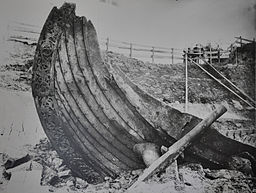 .The Oseberg when first excavated My book, Overheard In A Graveyard includes a short story, 'Overheard In A Museum' inspired by a visit to Oslo's Viking Ship Museum. The ship in the story, however, is the Gokstad, not the Oseberg.
.The Oseberg when first excavated My book, Overheard In A Graveyard includes a short story, 'Overheard In A Museum' inspired by a visit to Oslo's Viking Ship Museum. The ship in the story, however, is the Gokstad, not the Oseberg.
News : my book, The Ghost Drum, is going to be given away free on Amazon's kindle, tomorrow (Sunday 4th August) and Monday
 ship ever built.
ship ever built.Today, of course, it’s priceless. When it was built, it was, to say the least, ‘a high-status artefact.’ But it’s hard to form an idea of just how valuable it was when first made.
In the Viking Age, cold and hunger, even starvation, were always near: just one bad season away.
To keep hunger at bay, the time and labour of many people was needed. Fields had to be planted, weeded, harvested. Animals had to be tended, fish and game caught. Fuel was constantly needed, for cooking and brewing, and had to be found or cut, and stored for winter. Food had to be carefully stored, to preserve it: smoked, dried, salted. Milk had to be turned into cheese and butter. Wool and flax had to be spun into thread and woven into cloth. Barns had to be kept in repair, walls and tools mended.
This ship represents months, perhaps years, of labour that produced neither food nor fuel. Indeed, it consumed food and fuel, as the shipwrights had to be fed and housed by the labour of others. A ship of this quality wasn't built by farmers in their spare time.
 The prow The Vikings were expert shipwrights, but the Oseberg isn't merely utilitarian. It's exquisite, almost an art object. Look at the lines of her. Look at that beautiful prow, like a piece of sculpture. Look at the carving, probably once painted and gilded.
The prow The Vikings were expert shipwrights, but the Oseberg isn't merely utilitarian. It's exquisite, almost an art object. Look at the lines of her. Look at that beautiful prow, like a piece of sculpture. Look at the carving, probably once painted and gilded.  The carving This ship was an expression of staggering wealth, status and power. They built her, at all this expense, and then they threw her away: – they buried her.
The carving This ship was an expression of staggering wealth, status and power. They built her, at all this expense, and then they threw her away: – they buried her. Oslo's other great ship, the Gokstad, was a working warship before she was used in a ship-burial, but the beautiful Oseberg doesn't seem to have been much used. (Though, as ever, interpretation changes. It used to be said that the Oseberg wasn't sea-worthy, because a 1980s replica sank when taken into open sea. It was argued that the ship was merely 'a pleasure yacht,' intended only to cruise up and down a sheltered fjord. However, the replica was based on the original reconstruction, done soon after the ship’s discovery in 1904. As with the first reconstructions from dinosaur bones, mistakes were made, and pieces discarded because they ‘didn’t fit.’ A modern replica is now being built, based on far greater knowledge of Viking ships learned from Roskilde. This new Oseberg is confidently expected to be as sea-worthy as any other Viking ship.)
When excavated, the Oseberg was found to hold everything needed by a noble household: wooden brewing tubs, for instance, bound with iron, and the kind of small wooden bucket from which drink would be ladled into horns at table. Ladles. Cauldrons. Tapestries. A loom. A large bed. Carts and sledges. Horse equipage.
In a further expression of power and wealth, fifteen horses, four dogs, two small cows and some pigs were buried in and around it. All had been beheaded.
 One of the wagons What great king lay at the centre of this wealth? None. The ship sailed for the Other World carrying two women.
One of the wagons What great king lay at the centre of this wealth? None. The ship sailed for the Other World carrying two women. One woman was originally thought to have been aged between 25 and 30 at her death. Her skeleton had been damaged and some parts were missing. She had been clothed in a fine red wool dress with a lozenge pattern, and a fine white linen headdress.
The other, complete, skeleton had been a woman between 70 and 80, about five feet tall, with a crooked spine. Her bones showed signs of arthritis. She was dressed in plain blue wool, with a headdress of wool. These differences in dress arguably show a difference in status.
The original excavators reasonably concluded that at least one of these women had been extremely wealthy, possibly a queen. Since the ship dated to about 834 AD, it was suggested that she was Queen Asa. The name of the mound, Oseberg, was, it was suggested, possibly derived from 'Asa's Mound'.
The younger woman was supposed to be the queen's handmaid, possibly a slave who volunteered to join her queen in the grave, or was killed to accompany her. (Several Viking graves have been found where one occupant had been murdered – or sacrificed, depending on your point of view.)
In support of this theory was the fact that the younger woman's skeleton was damaged and her collar-bone broken - injuries possibly caused by a violent death.
This explanation never satisfied everyone. 'Oseberg' means, some maintained, 'The Gods' Mound.'
The bones from the ship were re-examined in 2007, and the new report said that the younger woman had not been 25-30, but nearer 50. Nor had she been violently killed. Her broken collar-bone had been healing for several weeks before she died. The other damage to her skeleton had been post-mortem.
Both women's diets had included a high proportion of meat, rather than the more normal diet for their time and area, with the protein supplied mostly from fish. The younger's teeth showed signs of wear consistent with her having used a metal toothpick - a luxury item. This suggested that both were of high status.
Were they mother and daughter? Not enough DNA could be collected from their bones to settle this question, but the older woman's bones showed that, besides arthritis, she had suffered from cancer, which had probably killed her. They also showed that she'd had a hormonal disorder, Morgagni’s Syndrome, which would have given her a masculine appearance, perhaps even a beard.
The theory that the older woman had been a queen, and the younger her slave were further weakened by the fact that the grave had been robbed during the Medieval period, and all metal items stolen. It was during this robbery that the younger woman's skeleton was damaged. Surely her skeleton had been broken by the robbers because it had been decked in jewellery of precious metal? Which would indicate that she, rather than her older companion, was of the higher status during life.
Other details: the two women lay on a great bed, itself a high status item. It had been carved with horses’ heads. One woman had a leather pouch containing cannabis seeds. Among their equipment was a long distaff – a tool strongly associated with women, it’s true, but also, for that very reason, with the Goddess Freya and the volvur, the pagan priestesses.
 Carving on the wagon The carts and sleighs on the ship had been assumed to be practical, working equipment, something needed by a great household. Researchers taking a new look at the grave goods pointed out what had always been plain: they were too small and shallow, and too highly decorated, to have ever been practical.
Carving on the wagon The carts and sleighs on the ship had been assumed to be practical, working equipment, something needed by a great household. Researchers taking a new look at the grave goods pointed out what had always been plain: they were too small and shallow, and too highly decorated, to have ever been practical. Such carts, however, have a long association with pagan gods. The Romans recorded that the Germanic Goddess Nerthus was driven in procession in a sacred cart. The sagas mention a priestess of Frey accompanying an image of the god, which is carried in a cart. Think of the many religious ceremonies today, where a figure of a deity is drawn in procession on some highly decorated vehicle.
So were the women in the ship priestesses? And if so, who did they worship?
 Replica tapestry from Oseberg A grave chamber was originally built over the women, and the walls were hung with tapestries – another declaration of status and wealth. The tapestries show women driving carts. Another image showed nine men hanging from trees, with three female figures standing nearby.
Replica tapestry from Oseberg A grave chamber was originally built over the women, and the walls were hung with tapestries – another declaration of status and wealth. The tapestries show women driving carts. Another image showed nine men hanging from trees, with three female figures standing nearby. It's recorded that, in the sacred grove at Uppsala, a festival was held to celebrate the Disir, the divine female powers. Every nine years, we are told by a Christian source, for nine days, nine males of every available species - including human - were sacrificed by hanging from the groves' trees.
Does the tapestry depict this scene? And if so, does it give us a hint about the women in the ship? It's hard to believe so much effort went into making a tapestry of men being hung simply because it was thought to be something pretty to hang on a wall.
The hung men immediately suggest Odin, the god who sacrificed Himself to Himself by hanging from the World Tree. Sacrifices were offered to Odin by hanging.
But those three female figures standing by… Priestesses? Goddesses? The Norns, or Norse Fates?
The Uppsala sacrifices were held in honour of the female powers, the Disir, and the Goddess Freya was the first of them. She is usually represented as a gentle, loving woman, but She had Her fiercer side: She is said to have 'shared the slain with Odin.' Were the women in the ship worshippers of Freya rather than Odin?
There are suggestions of it. One of the carts from the ship is carved with cats, which were associated with Freya - her cart was drawn by them. (A means of transport only available to a Goddess: imagine trying to drive a team of cats.)
The great bed is adorned by horses' heads, and horses were sacred to Frey. Horse fights were held in his honour. Are the horses' heads a reference to Frey and His powers of fertility?
Other historians have pointed to the number of things in the grave carved with serpents, which associate them with the Midgarth Serpent who coils around the earth, and with the giants. The Midgarth Serpent was one of the children of the god Loki and a giantess. Giants were worshipped in the Viking Age. Jord, or Mother Earth, was a giantess, and the mother of the God Thor.
Such Earth goddesses were linked with death and the Underworld, as well as with life and birth.
And what of those cannabis seeds? Nothing in the ship was made of hemp. It's been suggested that the seeds were in the pouch simply because they were rare in the North, and therefore precious. In view of the age-old use of cannabis to produce altered states of mind, I find this hard to believe.
It's known from the sagas that the Nordic witches, or priestesses, practiced a kind of shamanism called seidr, which involved trance states. It's known that they travelled from place to place, as a modern preacher might travel around his or her parish. And the practice of seidr seems to have involved a certain sexual fluidity. The gods most associated with it, Odin and Loki, both spend time as women. Loki goes so far as to give birth.
The ship-burial in itself may be significant. The easiest way to travel about Norway, even now, is up the coast by ship, so a travelling priestess might well need a ship.
Ship burials are themselves rare; and it’s even more unusual to find a woman buried in a ship. Grave goods are usually indicative of the gender of the person buried with them: weapons with a man; jewellery and a woman’s tools with a woman. In the Oseberg, the goods are much less specific: as if the grave’s inhabitants had somehow, in life, escaped such clear-cut definitions of gender.
And the older woman, if we believe the theory, had a masculine appearance and a beard.
Anne Stine Ingstad, the respected archeologist who excavated Viking settlements in Newfoundland, suggested that the younger woman may have been honoured, during life, as an incarnation of the Goddess Freya, while the other was a priestess who chose to follow her Goddess into death.
It's possible that, once the great mound was raised over the ship, the mound itself served as a place of worship: Oseberg, the Gods' Mound. And it’s possible that the mound was raised in honour of a woman who was both queen and priestess. The sagas mention royal women who were priestesses.
I’ve always been interested in the Oseberg, but researching this blog has set an insistent vision playing in my head: the ship sailing on dark currents into the earth, into the Underworld. Have its passengers, lying side by side on their great bed, reached their destination yet?
 .The Oseberg when first excavated My book, Overheard In A Graveyard includes a short story, 'Overheard In A Museum' inspired by a visit to Oslo's Viking Ship Museum. The ship in the story, however, is the Gokstad, not the Oseberg.
.The Oseberg when first excavated My book, Overheard In A Graveyard includes a short story, 'Overheard In A Museum' inspired by a visit to Oslo's Viking Ship Museum. The ship in the story, however, is the Gokstad, not the Oseberg.News : my book, The Ghost Drum, is going to be given away free on Amazon's kindle, tomorrow (Sunday 4th August) and Monday
Published on August 02, 2013 16:05
July 26, 2013
How The Collie Dogs Rounded Up A Story
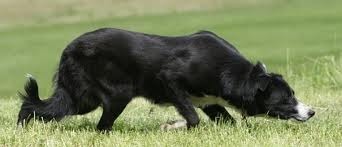
'Some years ago the late Miss Stewart Mackenzie of Brahan, Ross-shire, informed a friend that in the course of journeys by coach in the late autumn from Brahan to the South during her childhood about the year 1840 she used frequently to see collie dogs making their way north unaccompanied. On inquiring of her parents why these dogs were alone, [she] was informed that these were dogs belonging to drovers who had taken cattle to England and that when the droving was finished the drovers returned by boat to Scotland. To save the trouble and expense of their transport, the dogs were turned loose to find their own way north. It was explained that the dogs followed the route taken on the southward journey being fed at Inns or farms where the drove had 'stanced' and that in the following year when the drovers were again on the way south, they paid for the food given to the dogs...'I've more than once found inspiration in footnotes. The one above is taken from 'The Drove Roads of Scotland; by A. R. B. Haldane. I read it years ago - at least ten years ago. Those dogs were always trotting about at the edges of my mind.
Then they met up with the workhouse apprentices I'd read about thirty years ago. For centuries the apprentice system had put a boy to work for a craftsman. In return for his free labour, he recieved food, board and clothing, and a training in a trade.
With the industrial revolution, this system was corrupted to
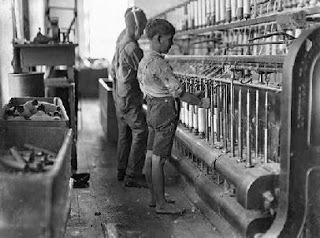 provide cheap labour for mills and factories. Pauper children were 'apprenticed' to the mills, where they were set to work for long, long hours in return for the cheapest food and clothing. They learned no skills, except the operation of machinery. At night they were locked up. They were, in everything but name, slaves. Their 'apprentice papers' bound them to the mill-owner until they came of age.
provide cheap labour for mills and factories. Pauper children were 'apprenticed' to the mills, where they were set to work for long, long hours in return for the cheapest food and clothing. They learned no skills, except the operation of machinery. At night they were locked up. They were, in everything but name, slaves. Their 'apprentice papers' bound them to the mill-owner until they came of age.What, I thought, if a child escaped from this slavery and, in running away, met up with a couple of collie dogs returning home to Scotland? The collies round him up, and as they provide protection and companionship, and he has nowhere else to go, he decides to walk with them wherever they take him. The dogs are heading west, to their home-croft on Mull, but the boy doesn't know that.
I found out my copy of Haldane's Drove Roads and consulted it. The drove route from the Isle of Mull to London was the one that seized my imagination. There were longer roads - cattle were, in historic fact, brought from the Outer Hebrides and driven down to London, but I decided not to tax modern readers' credulity.
My partner Davy, being a Scot of Highland descent, took a more than usual interest in this plotting. "It's too long," he said. "You've got to get them all that way. Why not keep it simple and have the dogs on their way back from the market at Falkirk?"
I don't always take his advice - it's his constant complaint - but on this occasion, I listened. 'Keep it simple, stupid,' is a good rule of thumb.
But if the boy was walking from somewhere near Falkirk to Mull, the dates wouldn't work too well for him being an escapee from factory enslavement.
When I said this, Davy told me what he knew about Scotland's 'bond-women' who wore an odd 17th century costume, and were 'bonded' to work on farms right into the early 20th century. Sometimes boys were bonded too, and it was a pretty harsh system. Davy told me of a boy he'd read of who'd been over-worked, under-fed, and made to sleep in a damp shed with thistles growing through his pillow. He'd escaped his bond by enlisting in the army when WWI broke out - and while everyone around him thought barracks life was harsh and the rations short, the bond-boy had never known such luxury in his life.
So there's my boy, walking west with the dogs, following the drove road out of English speaking Lowland Scotland, into Gaelic-speaking Highland Scotland. I don't know a word of Gaelic. I don't know much about Scots history - nor, unfortunately, do I know a man who does. Davy says, 'They don't teach English history in Scots schools, and when they taught Scots history, I wasn't listening.' Why does my imagination never give me anything easy to do?
But at least, thanks to Haldane, I know the route he and the dogs would have taken - and last week, Davy and I were up in Scotland, checking it out. And getting bitten by midgies (Davy) and by cleggs (me.)
We went to the old ferry crossing on Loch Awe, where the drovers took their cattle across.
 This is taken from Taychreggan. The building is a modern hotel, but it's situated where the old droving inn stood. The drovers took their cattle across here, and then climbed the hills beyond, heading for Loch Fyne. The modern hotels here are pretty swish and exclusive. They take some finding for one thing. It's not casual passing trade they're relying on. The thronged drovers' inns were about as unlike them as it's possible to be. Dr. Johnson gave them terrible reviews on his equivalent of TripAdvisor. They were, according to him, damp, dirty, flea-ridden and with filthy food. But as the drovers lived on oatmeal mixed with water, milk and blood, their taste was robust. From Taychreggan, as Davy was feeling strong, we took the road less travelled, via Glen Nant and Glen Lonan, to the town of Oban. So we came in over the hills, as the drovers would have done. The journey was beautiful, but only for drivers of strong nerve. The sheep don't help, as they lie in the road, toasting their little trotters on the hot tarmac, and giving not a spit for tourists in cars. The mountains - ('Hills,' Davy says, 'they're hills.') - the mountains rose above us and leaned over, peering down like giants. It gave me a vivid feeling of how my wee boy would feel, lost in that landscape, and how glad he would be of the dogs' company. The Highlands were more populated then, with many crofting communities. Even so, it would have been no walk through a park. Here's Oban.
This is taken from Taychreggan. The building is a modern hotel, but it's situated where the old droving inn stood. The drovers took their cattle across here, and then climbed the hills beyond, heading for Loch Fyne. The modern hotels here are pretty swish and exclusive. They take some finding for one thing. It's not casual passing trade they're relying on. The thronged drovers' inns were about as unlike them as it's possible to be. Dr. Johnson gave them terrible reviews on his equivalent of TripAdvisor. They were, according to him, damp, dirty, flea-ridden and with filthy food. But as the drovers lived on oatmeal mixed with water, milk and blood, their taste was robust. From Taychreggan, as Davy was feeling strong, we took the road less travelled, via Glen Nant and Glen Lonan, to the town of Oban. So we came in over the hills, as the drovers would have done. The journey was beautiful, but only for drivers of strong nerve. The sheep don't help, as they lie in the road, toasting their little trotters on the hot tarmac, and giving not a spit for tourists in cars. The mountains - ('Hills,' Davy says, 'they're hills.') - the mountains rose above us and leaned over, peering down like giants. It gave me a vivid feeling of how my wee boy would feel, lost in that landscape, and how glad he would be of the dogs' company. The Highlands were more populated then, with many crofting communities. Even so, it would have been no walk through a park. Here's Oban.
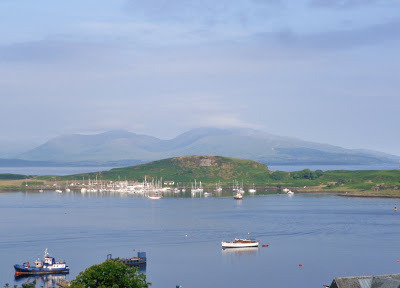
The green island in the foreground is Kerrara, which safeguards Oban's harbour.Rising up behind it are the mountains of Mull. It's quite hard to imagine Oban as it would have been at the turn of the 18th-19th century. The whisky distillery - one of the oldest - would have been there, and the castle, obviously. Over on Mull, we visited Grass Point, which is where the cattle and drovers left the island. The cattle were taken by boat over to Kerrara, walked the length of this small island, and then swum across the narrow strait to Oban. We tried to pin-point where this was, and decided that it must have been near where the castle stands.
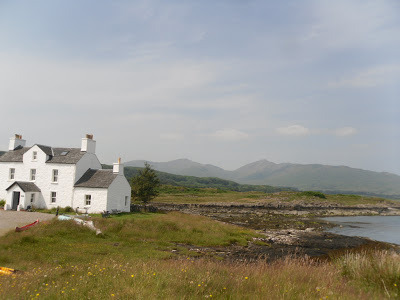
Here's the old ferry house at Grasspoint on Mull - today it's another remote place to stay on holiday. If you like holidays where the only night-life is provided by midgies. We ended here, on Iona, so Davy could walk in the footsteps of the great Scottish colourist, Cadell.
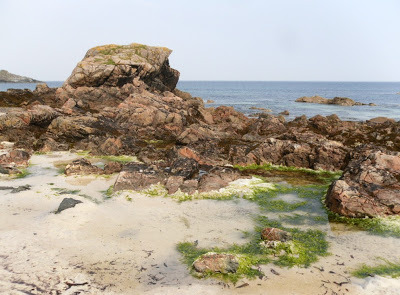
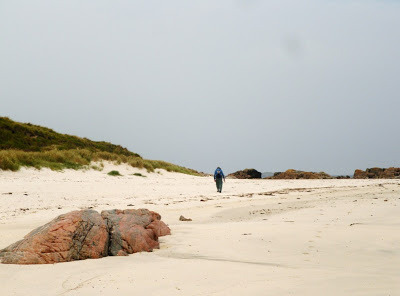
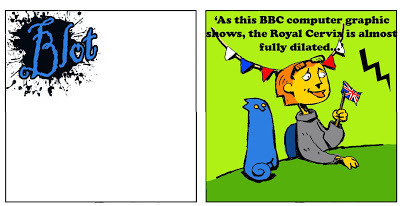
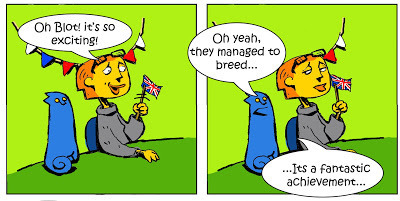
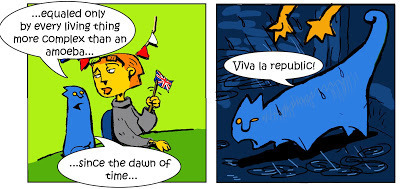
I am entirely with Blott. If he comes round to mine, he can have Republican sanctuary with a warm dry cushion and cream.
Published on July 26, 2013 16:05
Susan Price's Nennius Blog
"I have made a little heap of all I've found..."
"I have made a little heap of all I've found..."
...more
- Susan Price's profile
- 71 followers



